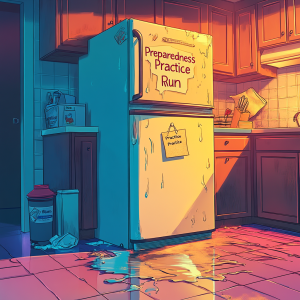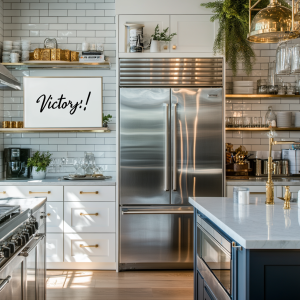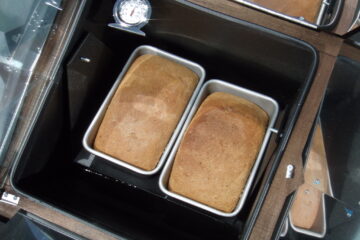
When the refrigerator decides to give you a practice run in preparedness
I Tried Living Without a Fridge for a Week—Here’s What Thawed Out (Including My Sanity)
It started as a choice. Sort of. My fridge didn’t completely give up the ghost, but it started making a noise that sounded suspiciously like it was gargling its last Freon. Instead of rushing to replace it, I thought, “Why not turn this into a real-life preparedness test?” A full week, no fridge. No cheating. Just me, my pantry, a couple of coolers, and a strong sense of curiosity (okay, and maybe a backup generator, but that’s beside the point).
What followed was less of a disaster and more of a master class in old-school food management. Spoiler: it turns out we’ve all been refrigerating things that don’t actually need to live in cold captivity. Also spoiler: sour cream without refrigeration has a shelf life shorter than a Hollywood marriage.
Day 1: Strategic Salvage and the Great Cooler Tetris
The
- “Use now or compost later”
- “Cooler life it is”
- “Oh wow, I forgot I had this”
Let me tell you, cooler management is an art. It’s not just about stuffing ice packs in and praying for the best. There’s a system. Heavier items at the bottom, delicate stuff on top, and the whole thing managed like a rotation chart. I treated it like cold storage Sudoku, and it worked surprisingly well—especially when I remembered to not let the lettuce hug the ice pack like it owed it money.
Day 2–3: Fermentation Nation and Shelf-Stable Swagger
This is where the fun began. I didn’t panic—I pivoted. Out came the fermentation crock, and into it went cabbage for sauerkraut. I poured myself some shelf-stable almond milk like a boss and reintroduced my pantry to the concept of relevance.
Turns out, a lot of foods don’t need refrigeration when you store and prep them right. Eggs? Totally fine at room temp—if they haven’t been washed and you know their source. Butter? Happy on the counter for a few days, especially if salted. Hard cheeses? Basically edible antiques. And my root veggies? Thriving like it was 1932.
Day 4–5: Cooking Intentionally, Eating Like a Prepper Queen

homemade kombucha
Meal planning changed—but not in a bad way. I shifted toward one-pot meals, shelf-stable staples, and intentional portions. This wasn’t survival food—it was smart food. Lentil curry with canned coconut milk. Tuna cakes made from pantry items and a little elbow grease. And oh, the joy of discovering that room-temp pickled beets go with practically everything.
Cooking without cold storage forced me to use what I had, rotate my pantry, and stay on top of what needed eating next. There was no “shove it in the back of the fridge and forget it exists until it evolves legs” option. Food was used purposefully, and that kind of discipline has a way of spilling over into other parts of life—budgeting, time management, even my sleep schedule. Funny how eating intentionally leads to living intentionally.
By Day 5, I wasn’t just managing without a fridge—I was kind of thriving. I wasn’t digging through icy drawers or forgetting what was slowly mutating in the vegetable bin. I knew exactly what I had, how to use it, and why it mattered. Not once did I miss the cold convenience. Okay, maybe once—when I reached for a popsicle and remembered I’d already eaten the emergency stash on Day 2. Still. Worth it.
Day 6: The Curious Case of What We Refrigerate “Just Because”
By Day 6, I had developed a sort of fridge-free swagger. I started eyeing bottles and jars in people’s kitchens like a prepper Sherlock Holmes. “A1 Sauce in the fridge? Interesting choice, Karen.”
I also realized how deeply refrigeration habits are baked into our culture. We’ve been trained to think that if it came from a store shelf cold, it needs to stay cold forever, or it’ll turn on us like a forgotten ex. But the truth is, most condiments are vinegar-based and shelf-stable. Ketchup. Mustard. Soy sauce. Hot sauce. All fine on their own, but we keep them chilled like they’re royalty.
And don’t get me started on apples. Nature gave them their own packaging. They don’t need to be nestled next to your leftover meatloaf like some fruit-shaped emotional support animal.
This part of the experiment flipped a switch. I started reading labels differently. I trusted my instincts more. And I stopped refrigerating things “just because that’s what my mom did.” Sorry, Mom—but your mayo might’ve been living in a climate-controlled prison all these years for no good reason. (Eggs in mayo are pasteurized)

A successful practice run without a refrigerator
Day 7: Perspective, Peace, and a Cold Drink from the Backup Plan
On the last day, I gave myself a gift. I walked over to the backup mini-fridge plugged into my solar-powered inverter, pulled out an ice-cold kombucha, and toasted the fact that I made it—no stress, no spoilage, no drama.
This little experiment wasn’t about deprivation—it was about adaptation. And in the process, I reconnected with a slower, more deliberate rhythm of food prep. Less waste. More planning. A deeper appreciation for systems I’ve built and the skills I’ve practiced.
Takeaway: Cold Is Convenient, Not Critical
Living without a fridge isn’t my new lifestyle—but it is a powerful reminder of how self-reliance shows up in the small, everyday details. It’s knowing how to store food without panic. It’s having options when the grid fails or the appliance repair guy ghosts you. It’s confidence.
And confidence, unlike sour cream, never expires.



0 Comments